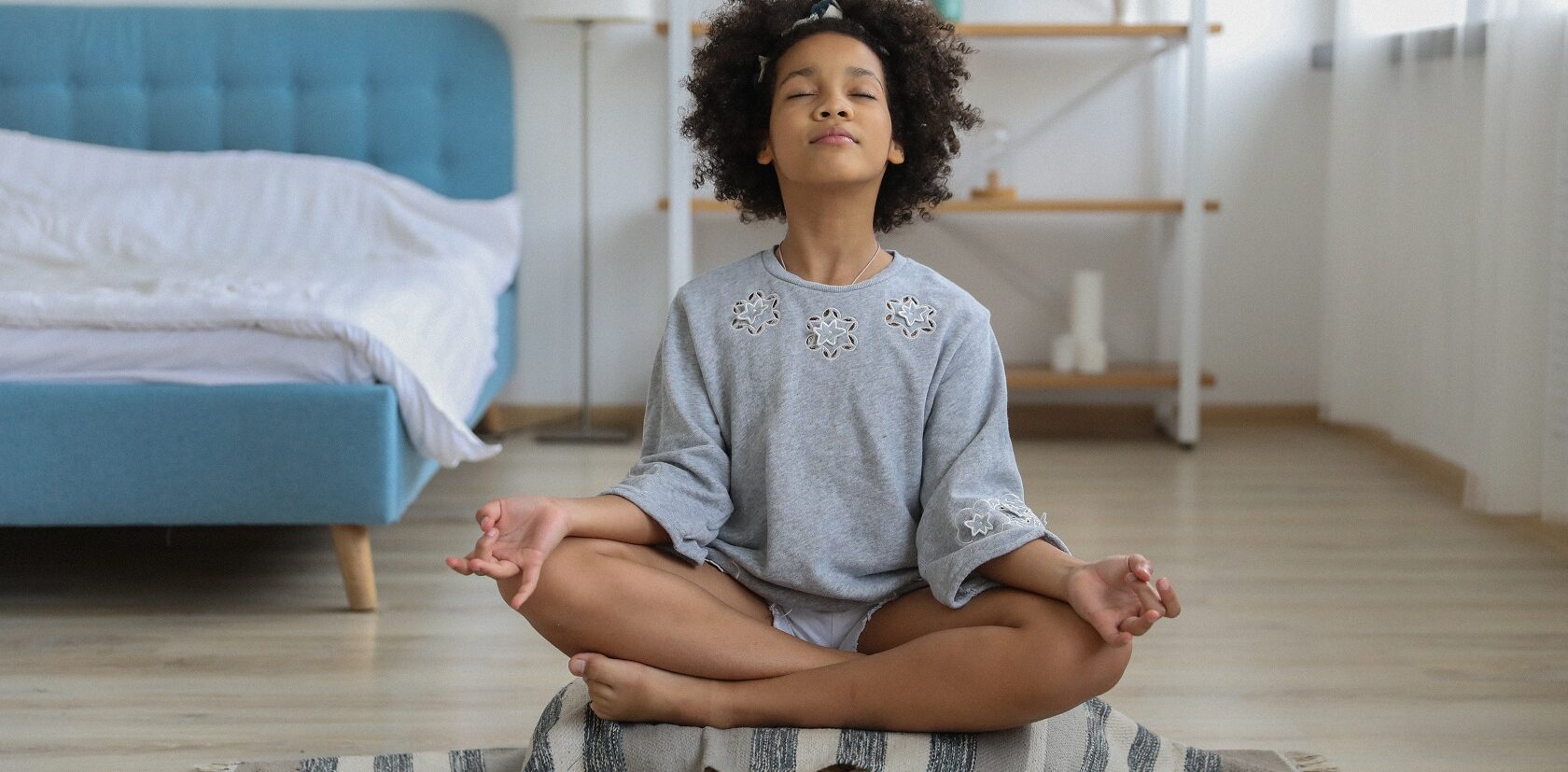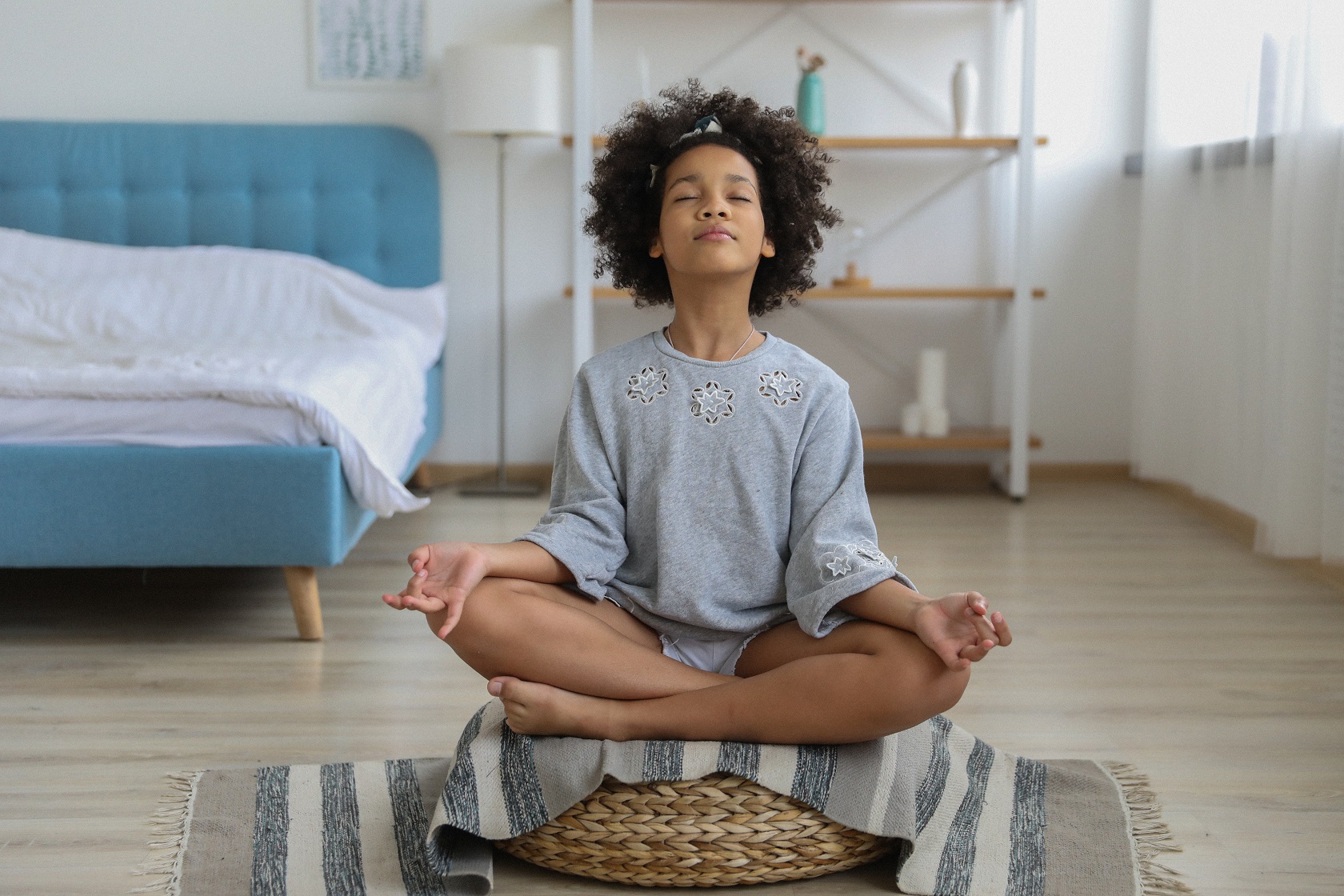Bring Mindfulness Into Their Daily Routine
All families experience stress. Some stress is necessary to teach us what’s important in our lives. When stress is overwhelming, we can benefit from learning coping skills. Hence it is important to Bring Mindfulness Into Their Daily Routine. This creates a healthy social-emotional skill. How we do this depends on the age of our children.
The attention span of a child is much shorter so we do shorter practices. Also, the brain of a child is not yet developed in the frontal cortex area where focus, attention, and emotional regulation take place. When teaching children meditation, directions need to be very simple and imaginative. Since breath awareness is the most basic mindfulness practice, it is where instruction starts for any level of practice.
When teaching breath awareness to young meditators, we explain that the breath in the belly is similar to a balloon that is inflated when we breathe in and deflated on the exhale. Using a visual anchor is easier for young children to grasp. Also, young meditators are more likely to feel the breath in their belly than in the other anchor areas such as the chest or the nostrils.
Mindfulness in classrooms
In my years of teaching mindfulness in classrooms, most students enjoy sitting and focusing on their breath. It’s the first anchor that is taught although it is something they most likely have never done. Children enjoy using their imagination as well as the resulting relaxation that comes from mindful meditation. Focusing on the inhale and exhale of the breath allows young meditators to get in touch with physical sensations which they may not have ever considered. Closing eyes is optional with young children and at-risk populations and I’ve found that hyperactive children do better lying down than sitting up. With young children and elementary-age students, we start with 1 minute and work towards 5 minutes of meditation.
The benefits of mindfulness for kids:
This is where I am especially passionate! Mindful Frontiers, whose mission is to teach meditation skills to families with young children, encourages them to incorporate mindfulness into their family’s daily routine. By teaching meditation to young children, meditation teachers believe this stress-reduction skill will be implanted in their brains early, and as they grow and mature they will always be able to go back to it in times of stress. It’s a social-emotional learning skill that has long-term benefits.
For example, even if a young person lets meditation go during adolescence as they pursue independence and autonomy, someday when they find themselves in a stressful situation, they can remember that as a child they learned this relaxation skill called mindful awareness and they can pick it back up. I would even say that a stressed-out teenager who is thinking of suicide or, worse, using a gun to let off anxiety, would remember what it felt to meditate and decide to do that instead. Doing so would save lives!
Other advice to Bring Mindfulness Into Their Daily Routine
Toddlers and preschool-age kids can listen to a bell/chime and focus on the sound from start to end. This age can also listen to sounds around them, gaze intently at an object, dance mindfully around a classroom. For breath focus, they can notice their belly inflate and deflate with the breath. With practice, a toddler could sit for a minute in silence.
Older children (elementary school age) can learn to focus on their breath, listen to a bell/chime as well as listen to sounds as meditation anchors just as the younger children. The difference would be the length of time this age could aspire to sit still. I would start with 1 minute of silent and guided meditation and work up to 3 minutes in about a week and then try to get to 5 minutes within a month. (Mindful Frontiers has a few videos on the meditation page targeting this age group).
Middle-school and high school ages are interesting. The brain of an adolescent is particularly active and believe it or not, the prefrontal cortex is developing at such a fast pace that it is as if they are toddlers again! The same kind of practice is done with this age group. What is different is that I start out with a story, a poem, or a video. And then move on to the actual meditation practice.
Mindful Frontiers
Mindful Frontiers encourages families to explore mindfulness and meditation together. To introduce this, we have a free eBook to share. Please see our website resources page for helpful meditation information and to subscribe to our newsletter.
Anne-Marie Emanuelli brings over two decades of meditation experience as Creative Director of Mindful Frontiers, an educational meditation center in New Mexico. Recently retired after 25 years as a classroom teacher, Anne-Marie’s life path and passion are to offer guidance, online courses, and coaching on the benefits of mindfulness and meditation. She has been teaching and guiding meditation students since 2016. And earned credentials from Mindful Schools and Sage Institute for Creativity and Consciousness.
Anne-Marie participates in online silent & guided meditation retreats to support her personal meditation practice. Mindful Frontiers’ mission is to welcome a mindful future — one child, family, adult, educator, and community — one present moment at a time.
Website: MindfulFrontiers.net / Instagram and Facebook: @mindfulfrontiers / Twitter: @mindfulfuture / YouTube channel / Link Tree page

